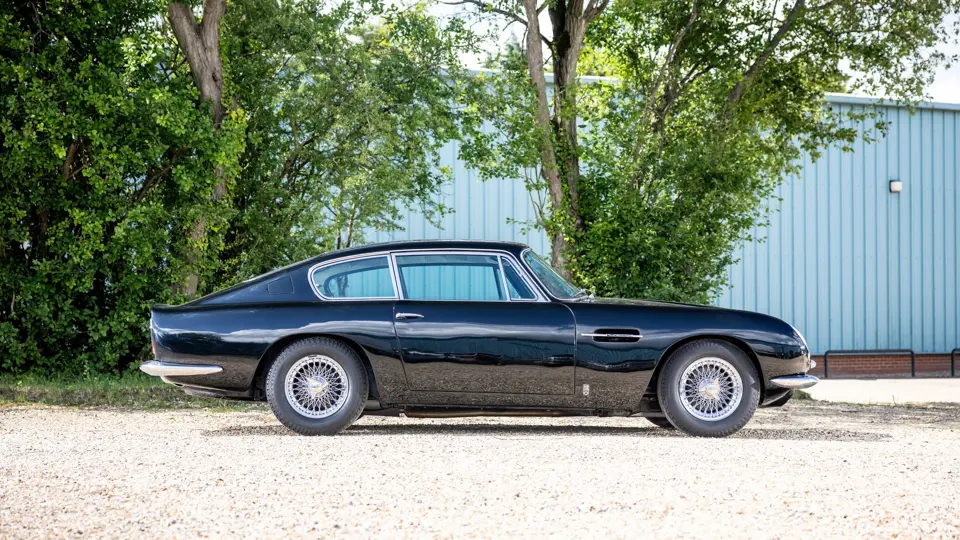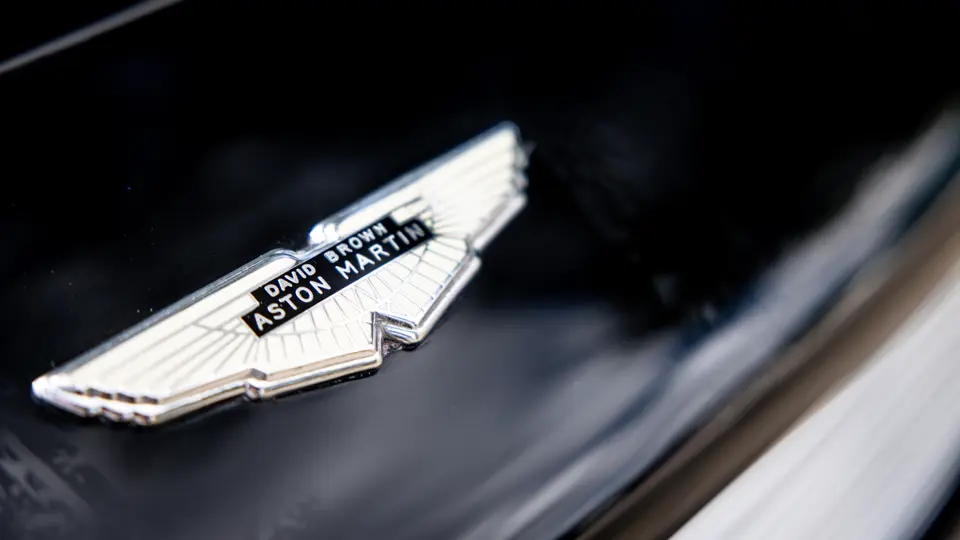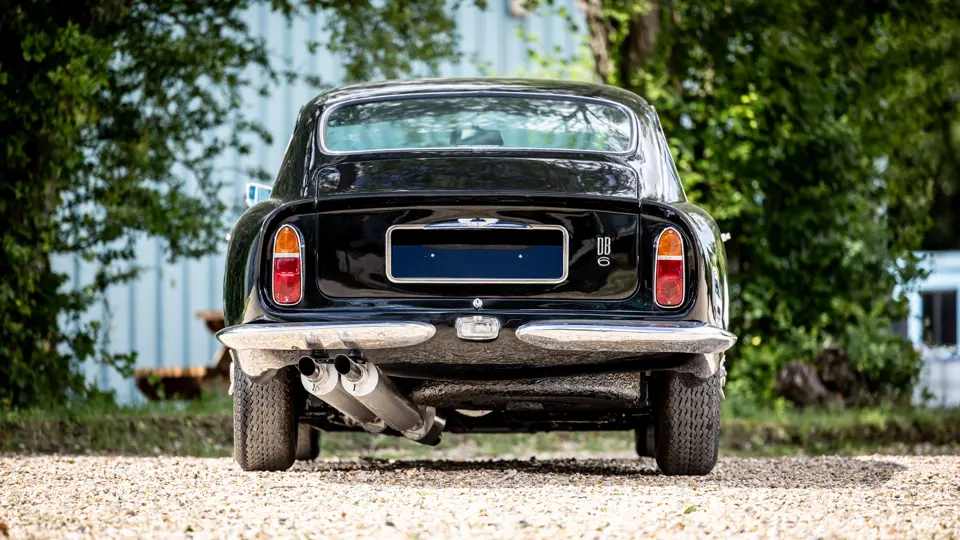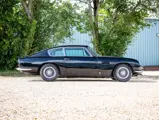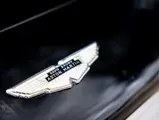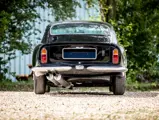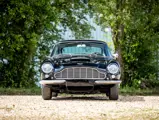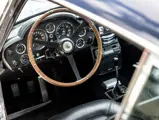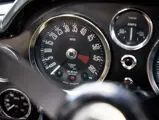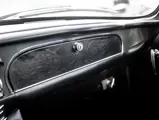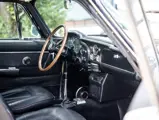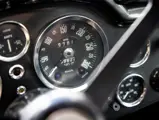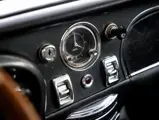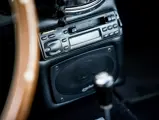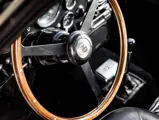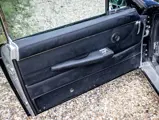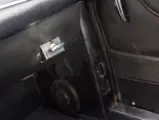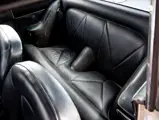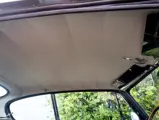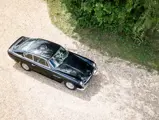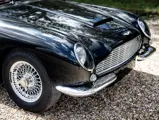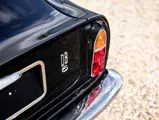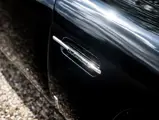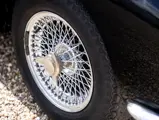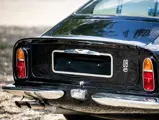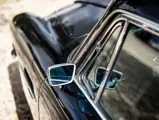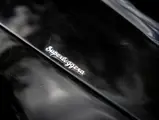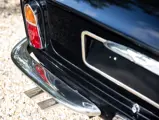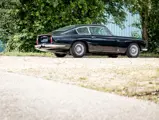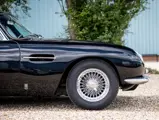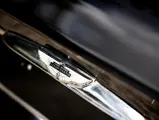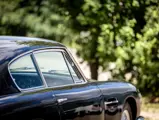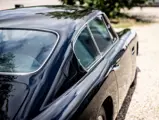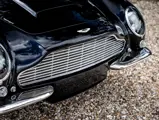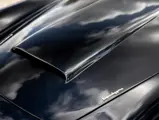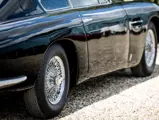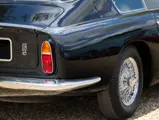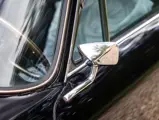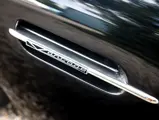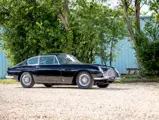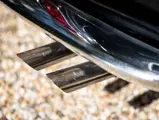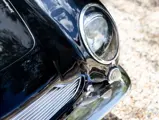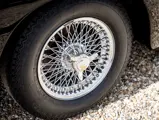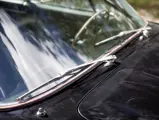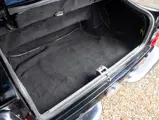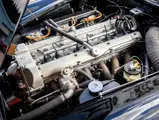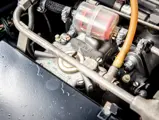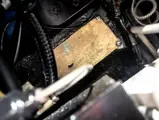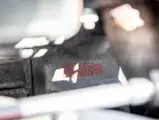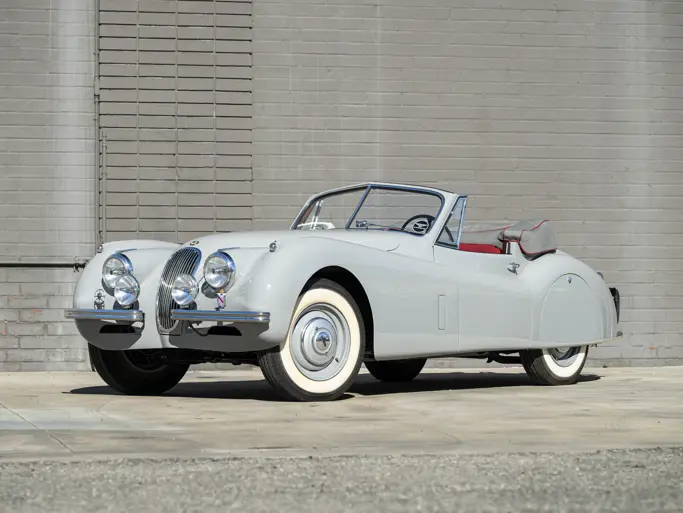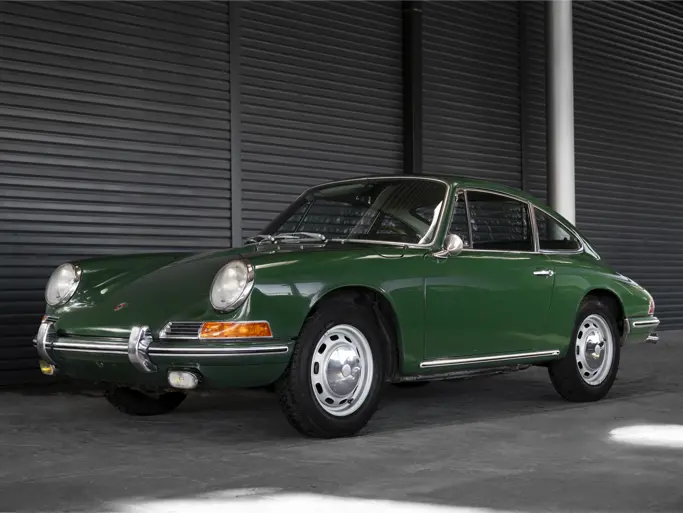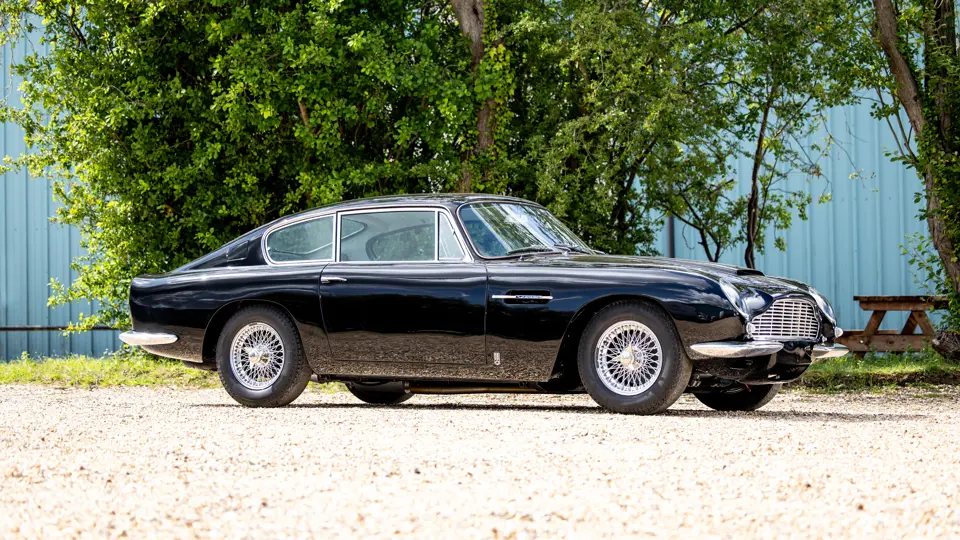
1966 Aston Martin DB6 Vantage
{{lr.item.text}}
CHF286,250 | Sold
{{bidding.lot.reserveStatusFormatted}}
- Thought to be one of just 268 examples of the DB6 Vantage coupé
- Highly desirable early-series, Superleggera-badged example with five-speed manual ZF gearbox
- Fitted with a Powr-Lok limited-slip differential, chrome wire wheels, and a heated rear window
- Retains its matching-numbers 4.0-litre, 325 horsepower, Vantage specification engine
- Accompanied by a British Motor Industry Heritage Trust certificate
Founded as long ago as 1913 by Lionel Martin and Robert Bamford, Aston Martin had by the 1960s—in spite of a turbulent commercial past—assumed a pre-eminent position among small-volume British car manufacturers. Its reputation for superb engineering and exquisite styling was complemented by an enviable competition record; five class wins at the 24 Hours of Le Mans prior to the outbreak of World War II followed by a further six, including an outright win in the 1959 event.
The purchase of Aston Martin in 1947 by industrialist David Brown led to a period of much-needed investment; a factor instrumental in the development of the era-defining DB4 and DB5 models in the late-1950s and early 1960s. The former made its debut in 1958 and featured a new Tadek Marek-designed, six cylinder, 3.7-litre engine, as well as a new platform chassis and stunning coachwork by Touring of Milan. Significantly, the DB4’s svelte aluminium body was folded over an intricate web of small diameter tubes. It was a construction method dubbed “Superleggera”—or “super light”—that would become the cornerstone of Aston Martin road car design throughout the next decade.
After some five years in production, the DB4 was superseded in 1963 by its evolutionary sibling, the DB5. Boasting a 4.0-litre version of the Marek-designed engine and a five-speed ZF gearbox, the new car was offered in either standard or Vantage form; the fitment of triple Weber carburettors on the latter boosting power from 282 to 314 horsepower. Though well received, and the recipient of huge exposure through its starring role in contemporary James Bond films—notably Goldfinger and Thunderball—production of the DB5 lasted just three years and totalled little more than 1,000 cars. As with many of its peers, its ergonomics and practicality were compromised, two factors which were instrumental in the introduction of its replacement, the DB6, at the 1965 London Motor Show.
In addressing the shortcomings of the DB5, the DB6 featured a wheelbase four inches longer and a higher roofline to improve leg and head room, this being especially welcome in the case of rear passengers. Other ergonomic alterations included a more steeply raked windscreen, front quarterlights, and opening rear windows of the type used on the DB4 GT Zagato. However, arguably the most significant aesthetic departure was the employment of a Kamm-style tail—as pioneered on the charismatic Project 212, 214 and 215 racing cars—in the interests of improving high-speed stability and reducing drag. A further change on later DB6s was the abandonment of the Superleggera body construction method, although early series examples were fitted with the appropriate bonnet-mounted logos and enjoy enhanced collector status as a result.
Mechanically, the DB6 remained largely unaltered from its predecessor. The car retained the DB5’s 4.0-litre engine and was made available in both standard and modified Vantage specification. However, while the power output of the SU carburettor-equipped standard car remained unaltered, additional minor modifications to the Vantage unit boosted power to some 325 horsepower. As a result, the new car’s top speed bettered that of the DB5 by 5 mph (8 km/h), raising it to the magical 150 mph (240 km/h) mark.
According to its accompanying British Motor Industry Heritage Trust (BMIHT) certificate, chassis number DB6/2641/L was completed at Aston Martin’s fabled Newport Pagnell works on 24 March 1966—one of just 268 examples of the DB6 Vantage understood to have been constructed. Finished in the fetching colour scheme of Platinum over a black leather interior, the car’s specification was further enhanced by the fitment of a five-speed manual ZF gearbox—rather than the three-speed automatic Borg-Warner unit also offered as a no-cost option—and a Powr-Lok limited-slip differential. Additional factory options included chrome wire wheels, a heated rear windscreen, and an electrically-operated radio antenna. The car was despatched to Parisian Aston Martin Agents Societe Nouvelle du Garage Mirabeau in this form a day after completion.
Regrettably, little else is known about the car until now as it is presented for sale once more. At some point, a respray in black was undertaken, although it would appear that the delightfully patinated leather interior is preserved. Crucially retaining its matching-numbers Vantage engine, and with the added cachet of being an early production, Superleggera-badged, manual gearbox car, chassis DB6/2641/L is a wonderful example of this most accomplished of grand tourers.




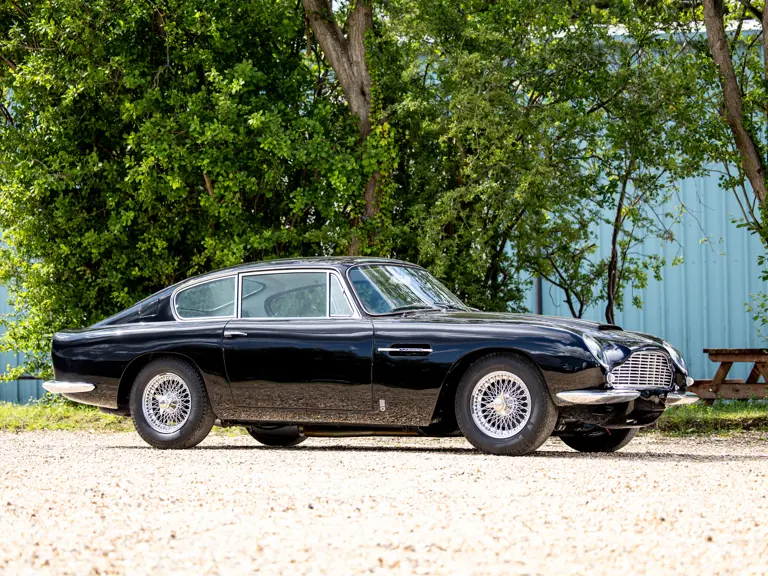

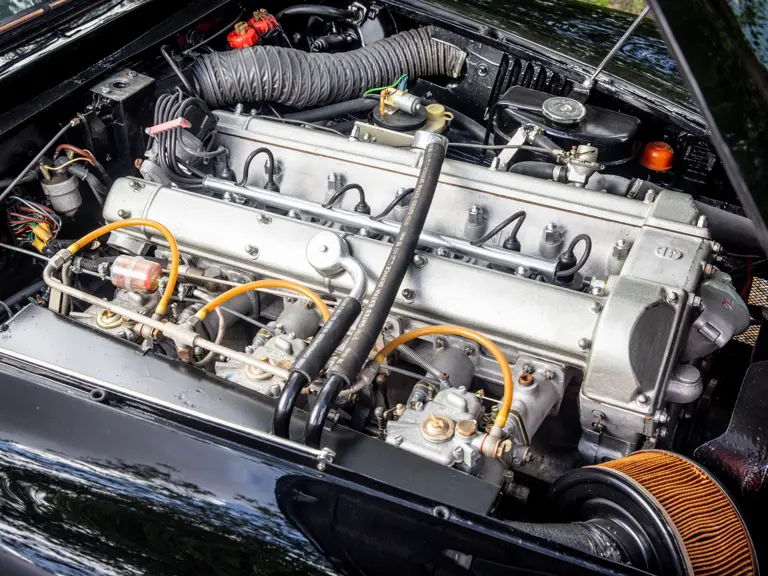
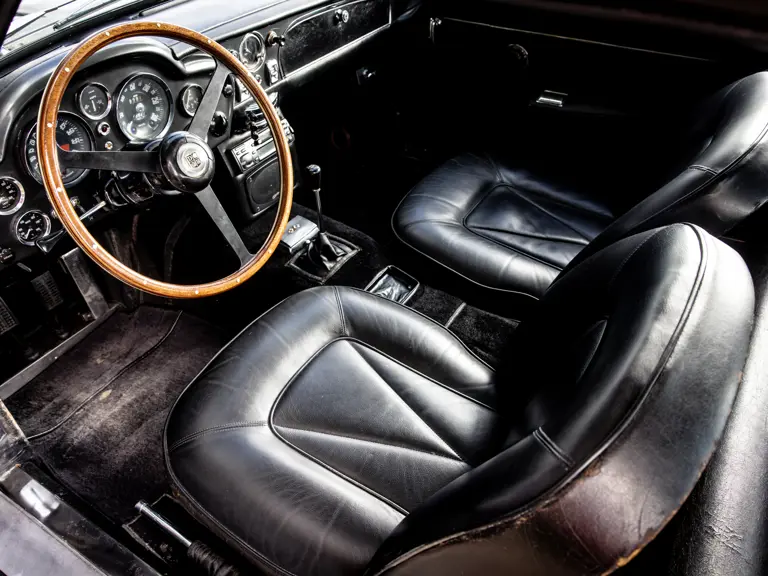
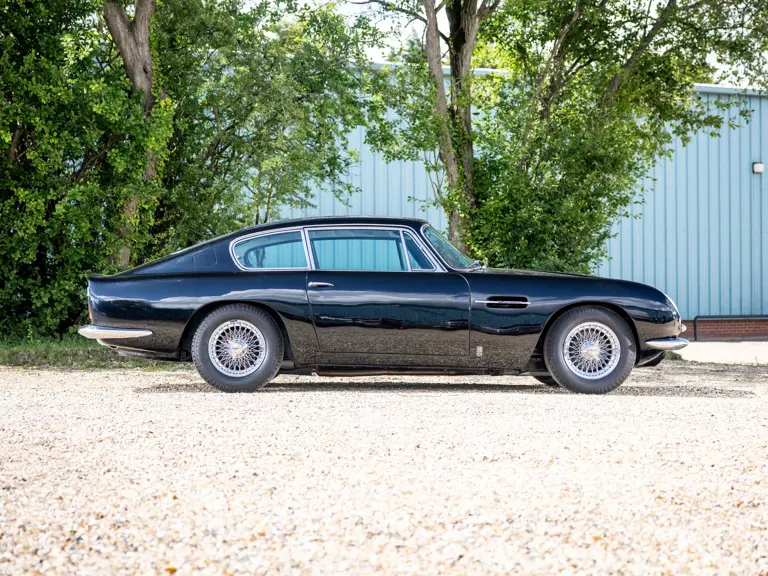
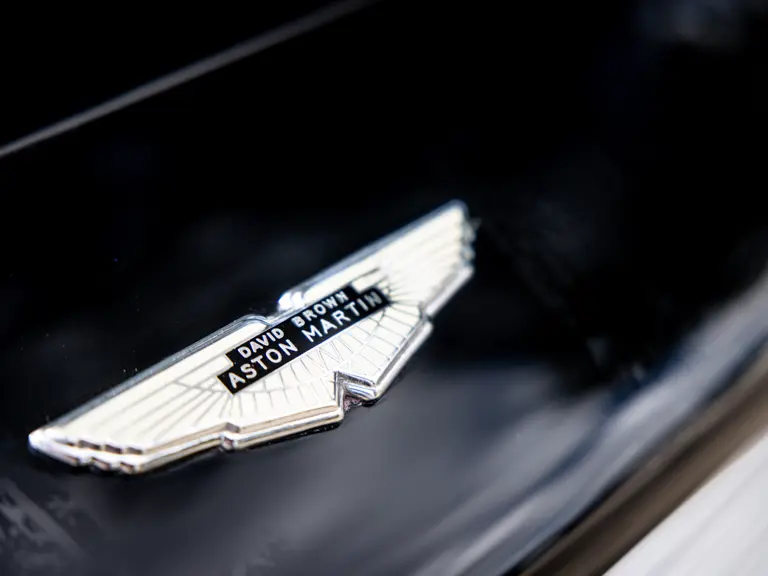
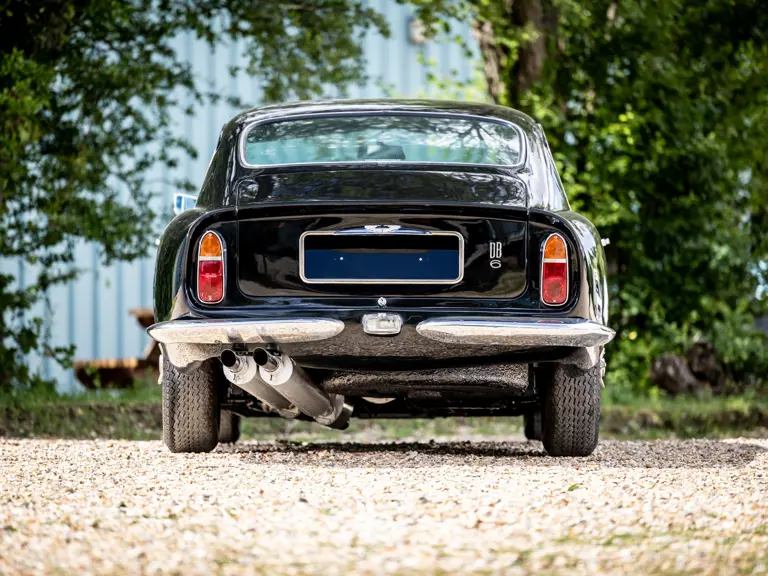
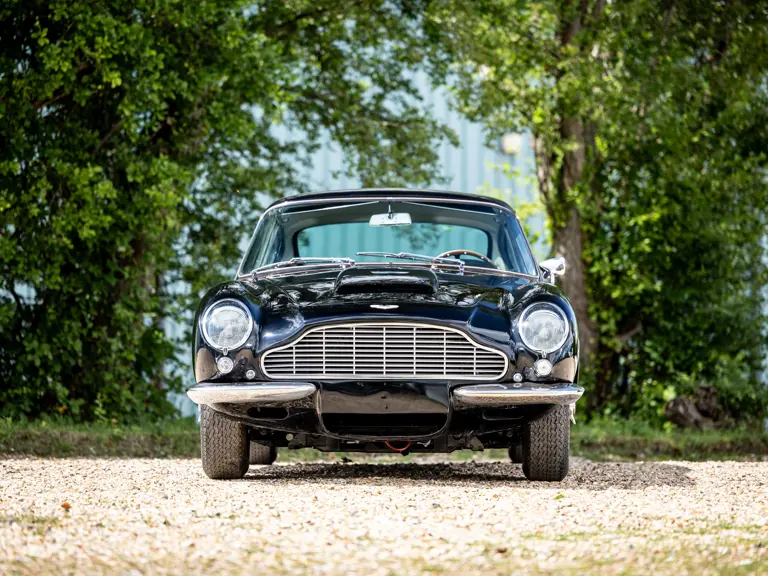

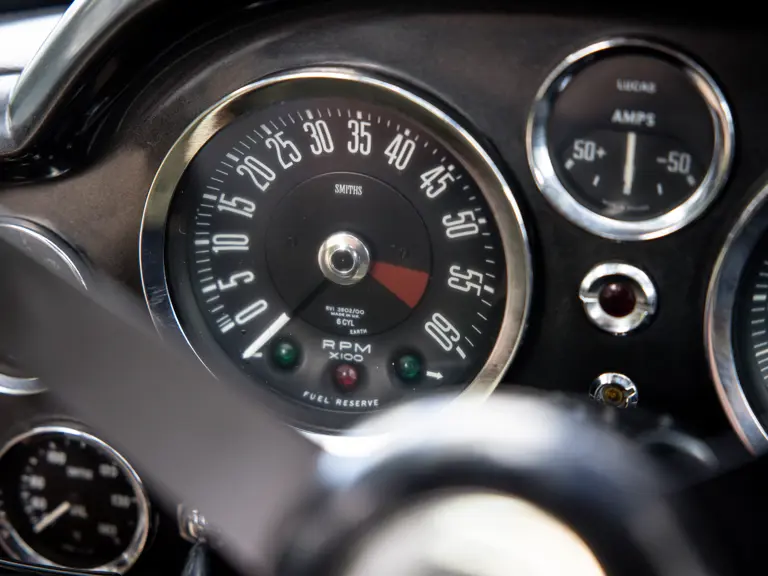

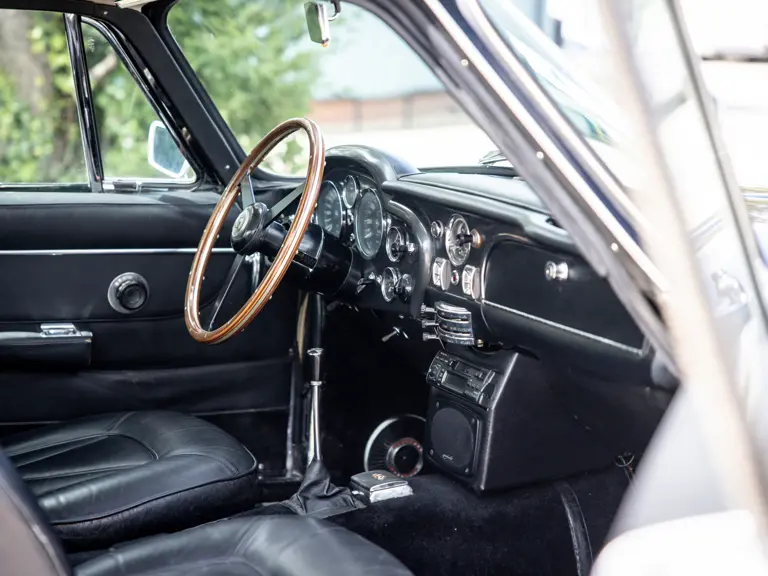
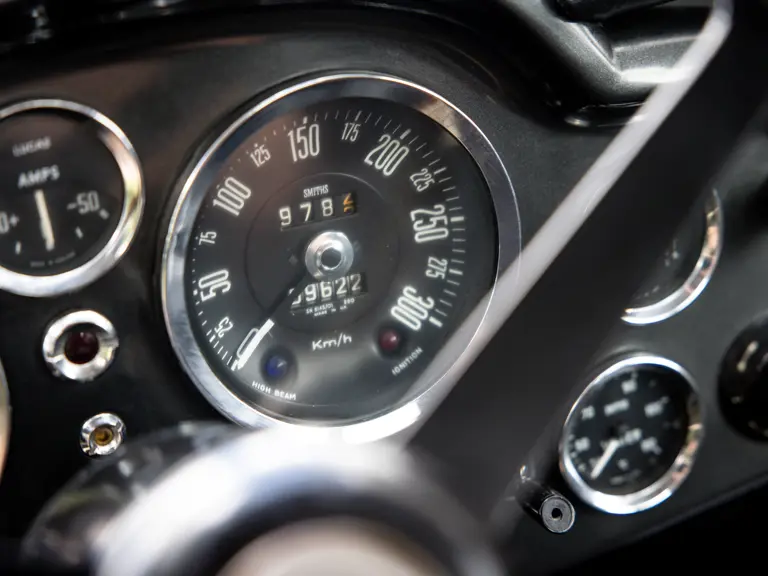
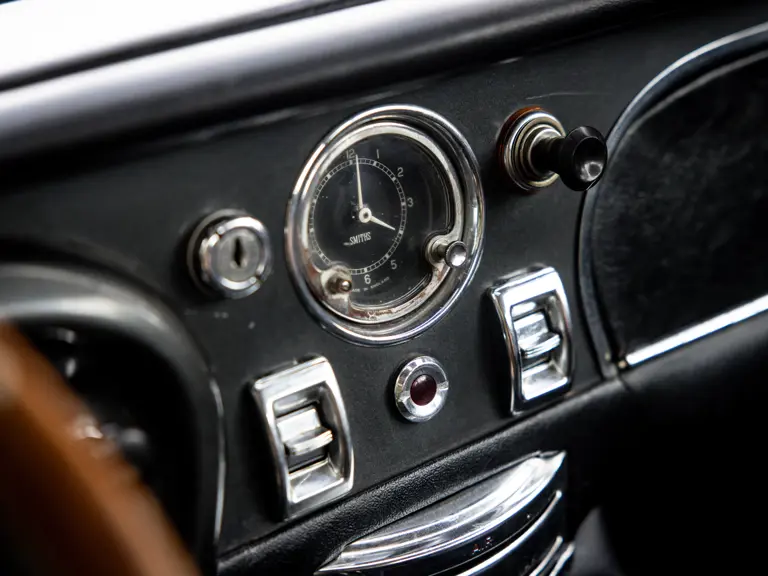
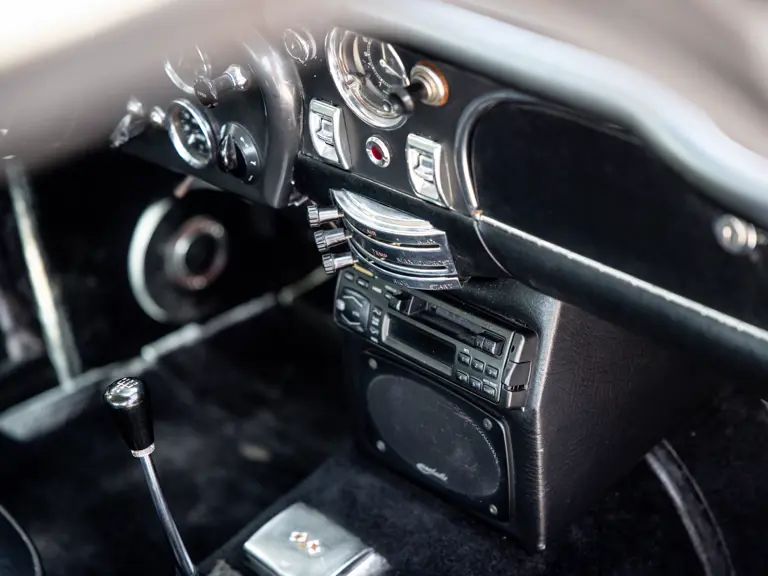
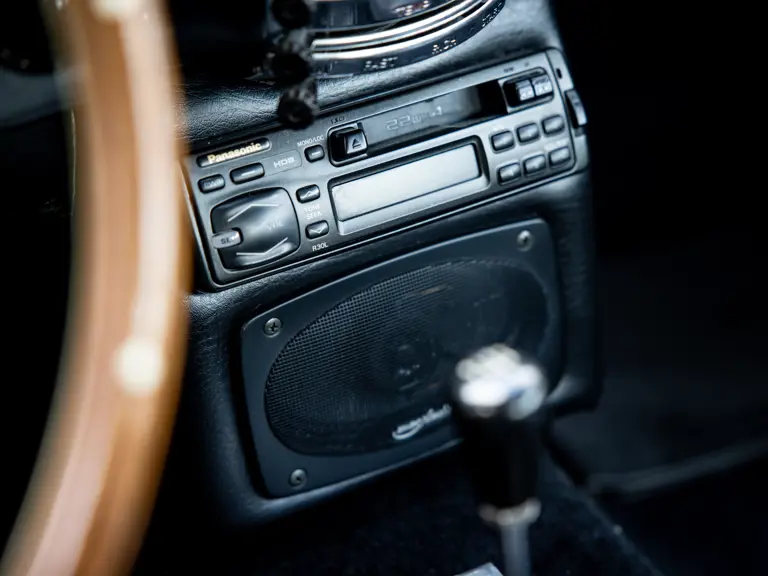
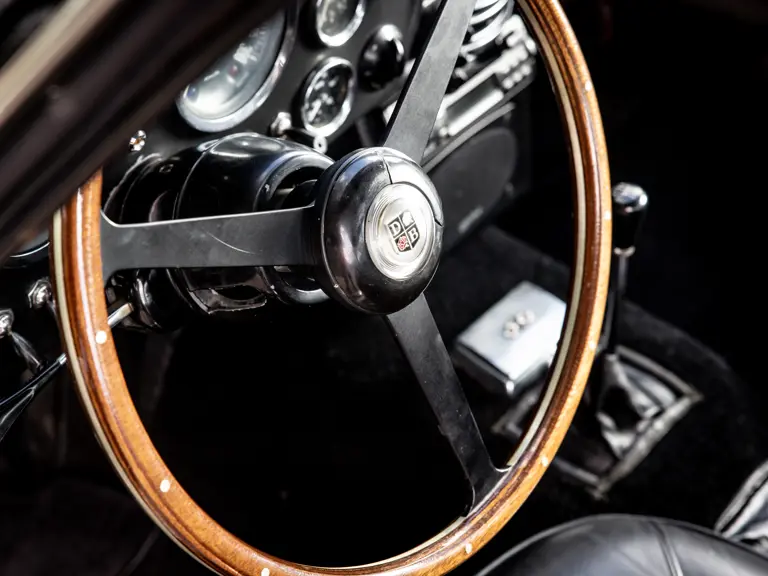

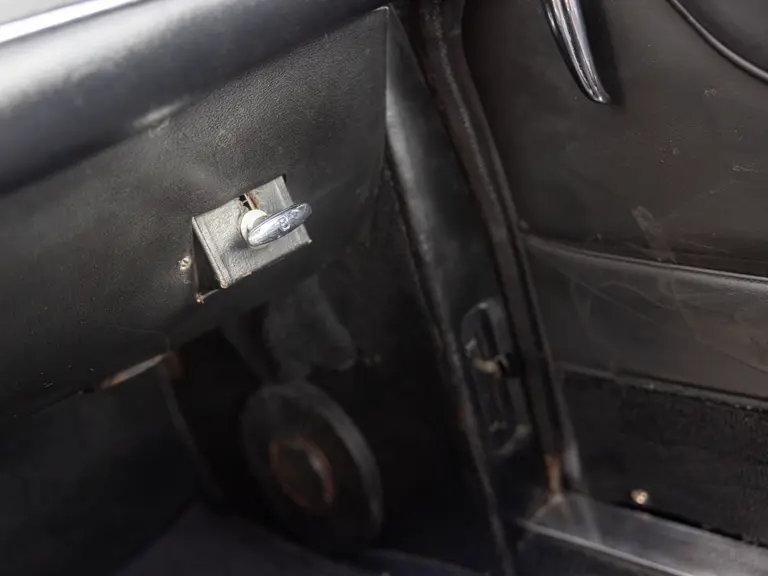
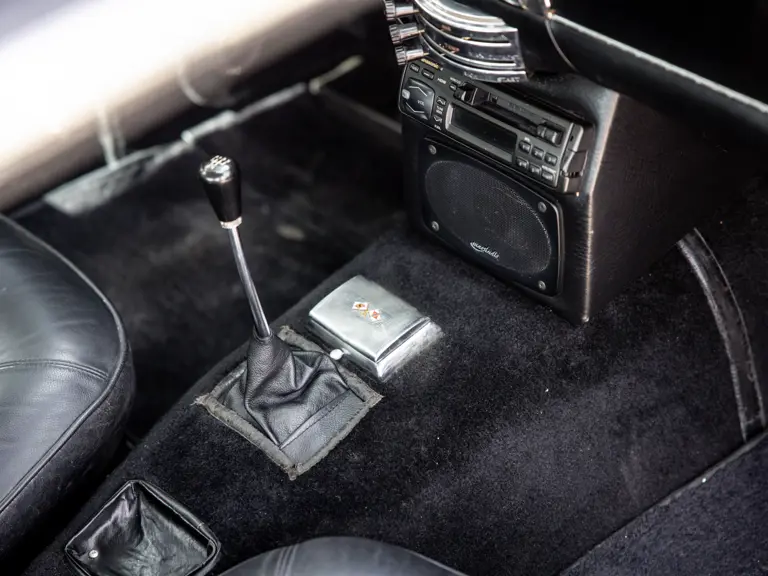
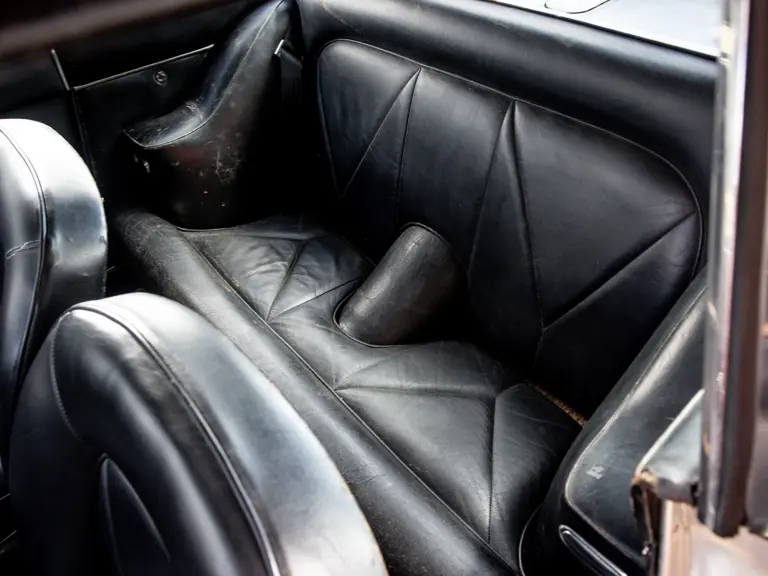

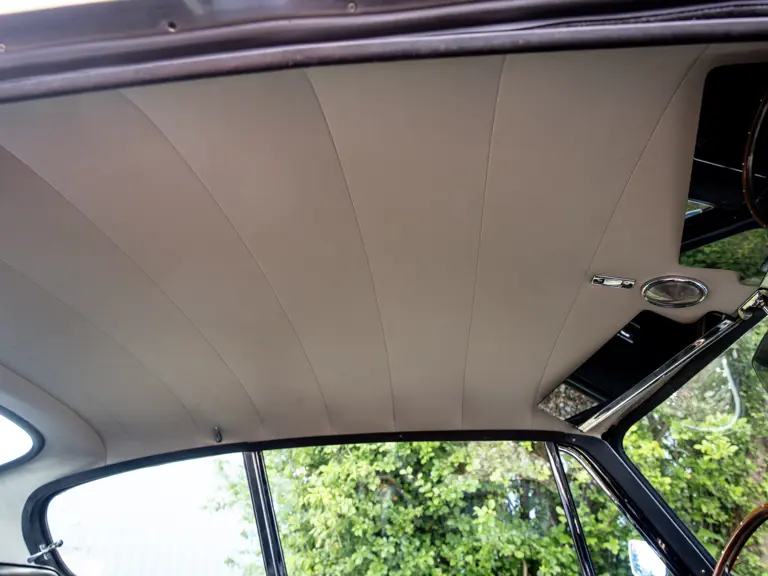
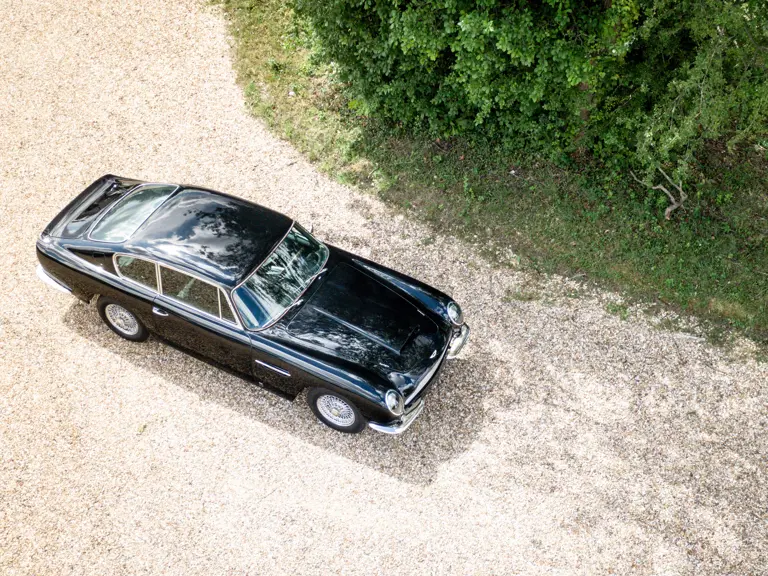

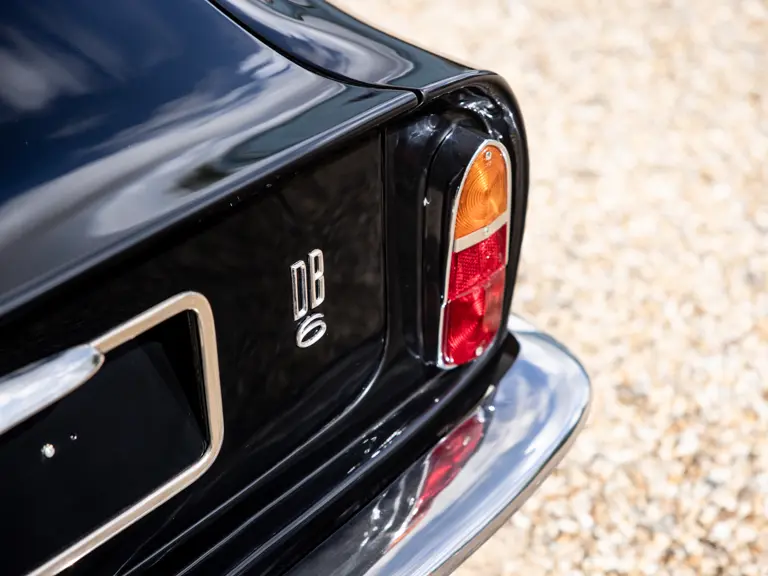
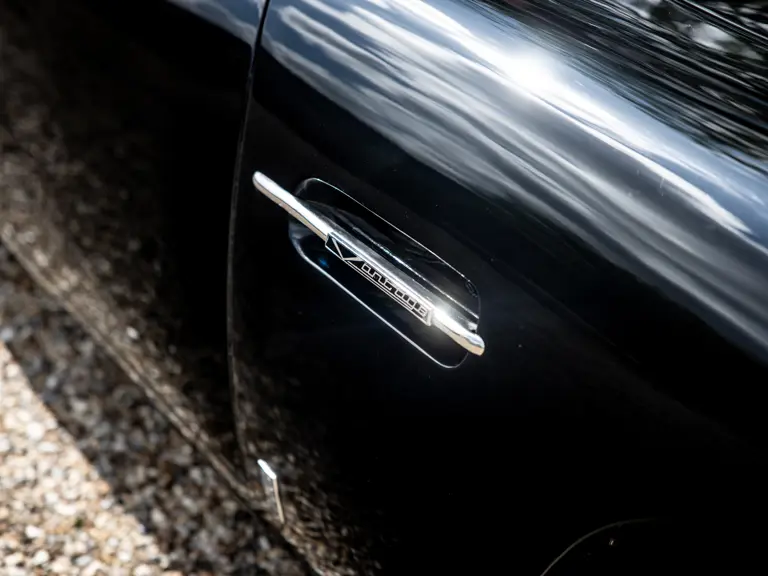


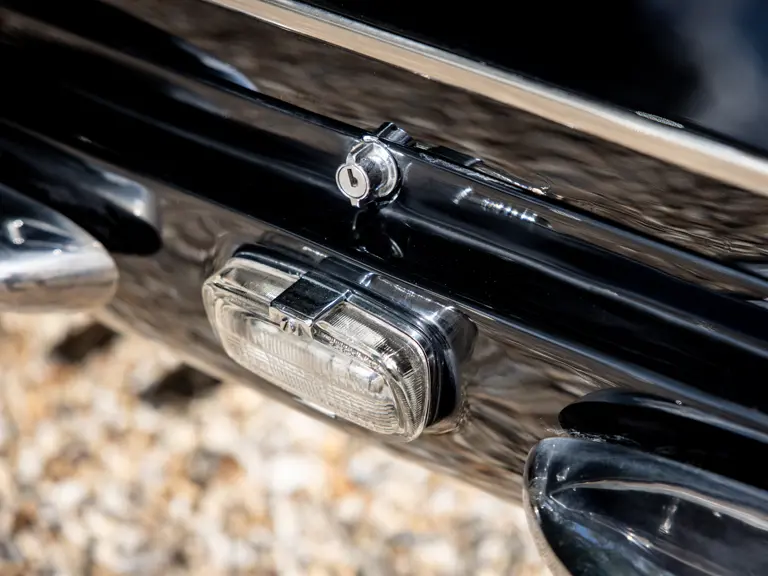
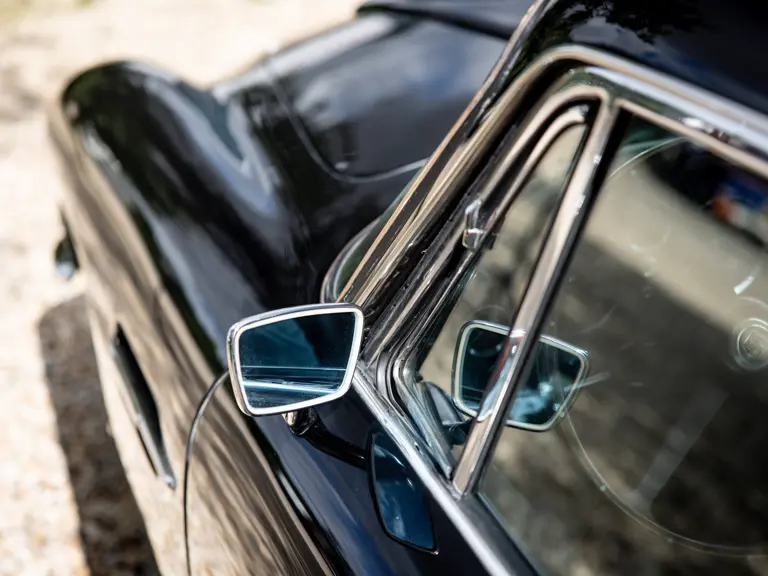

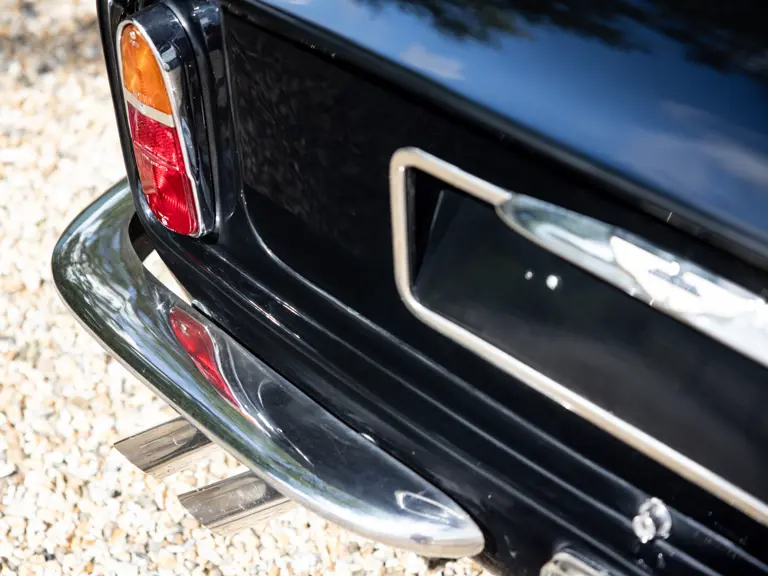
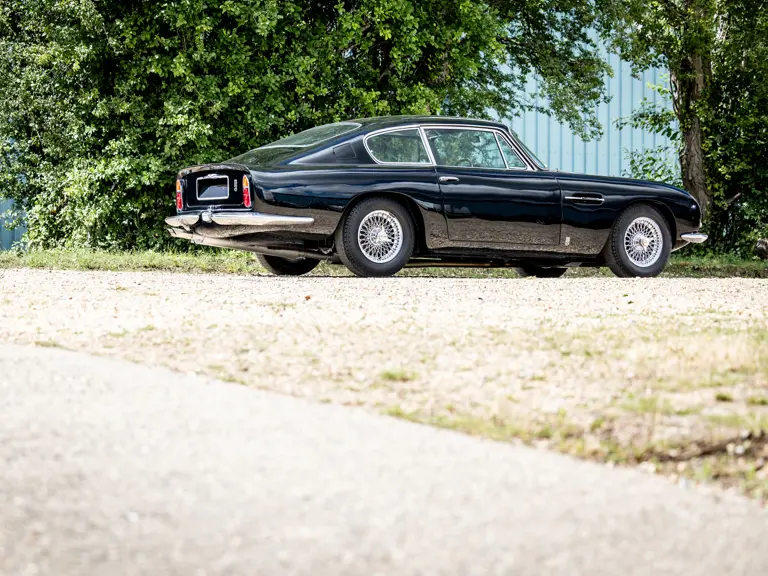
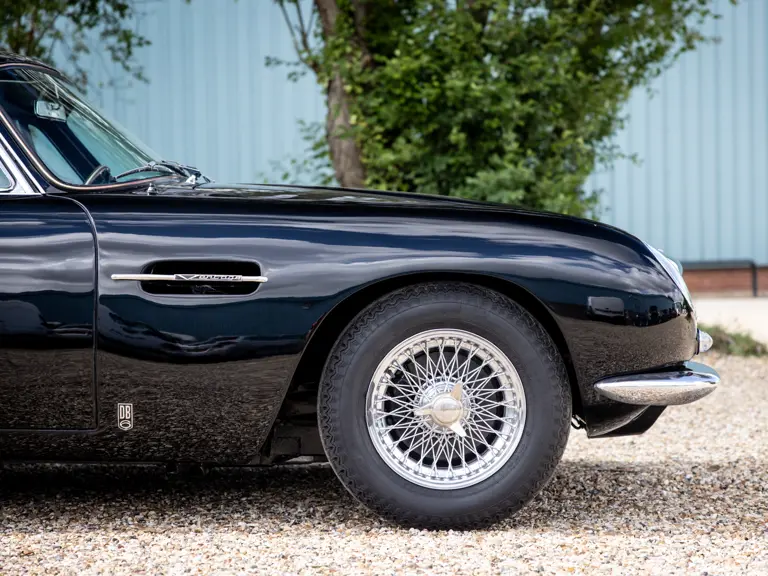
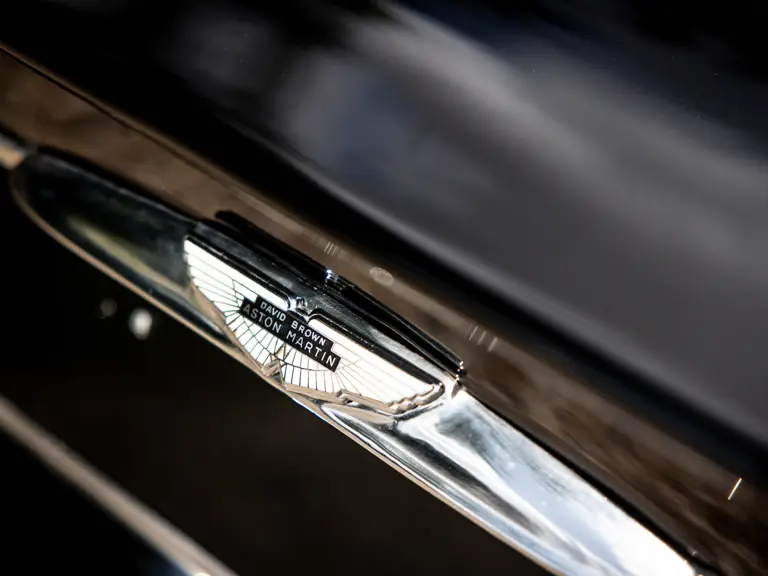
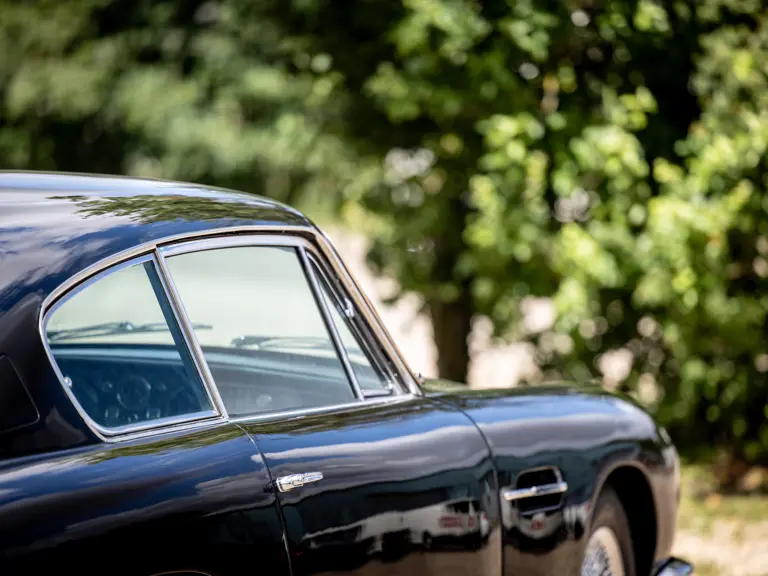
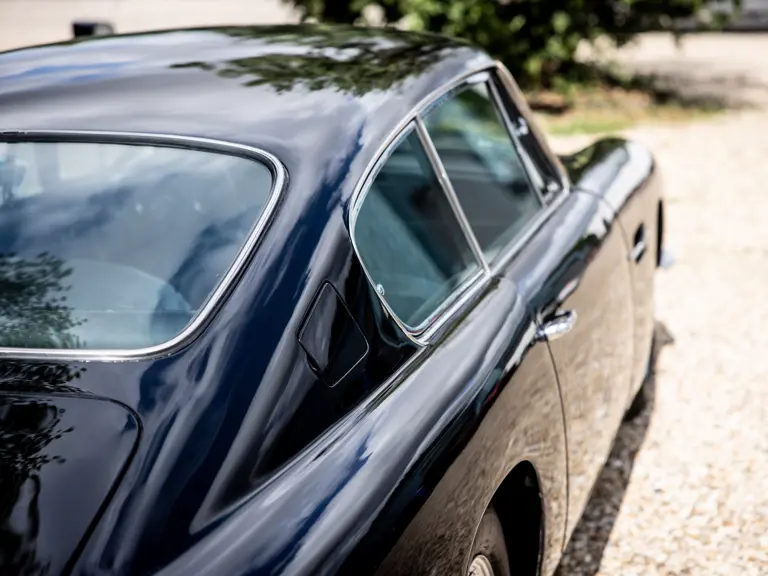
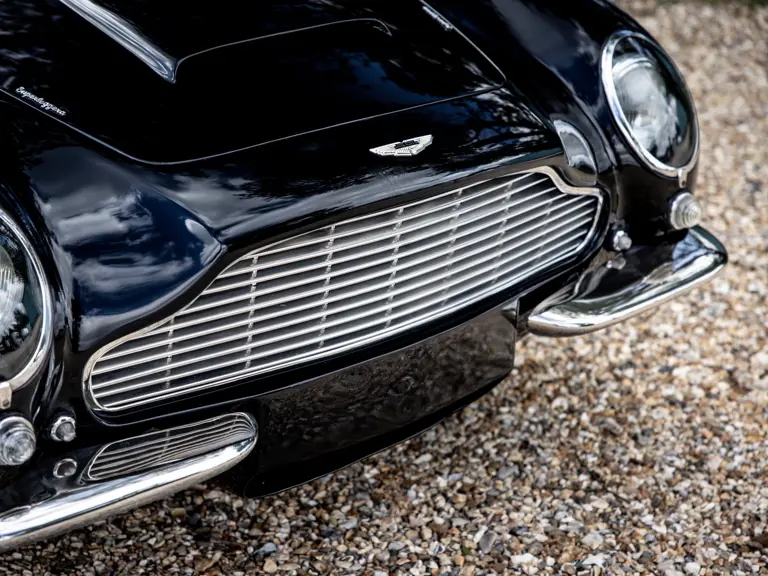


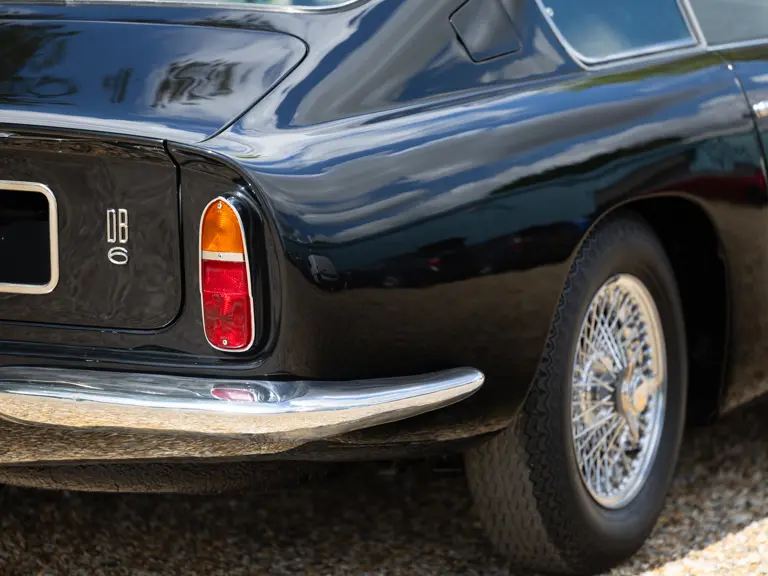

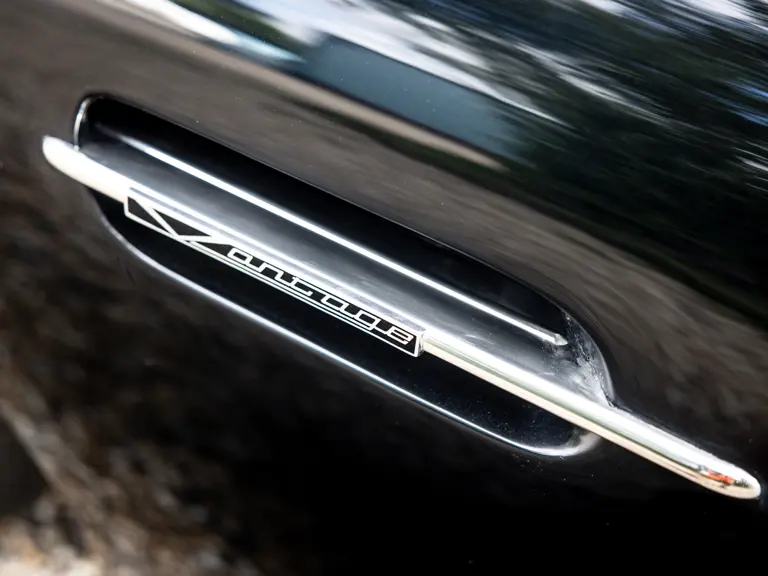
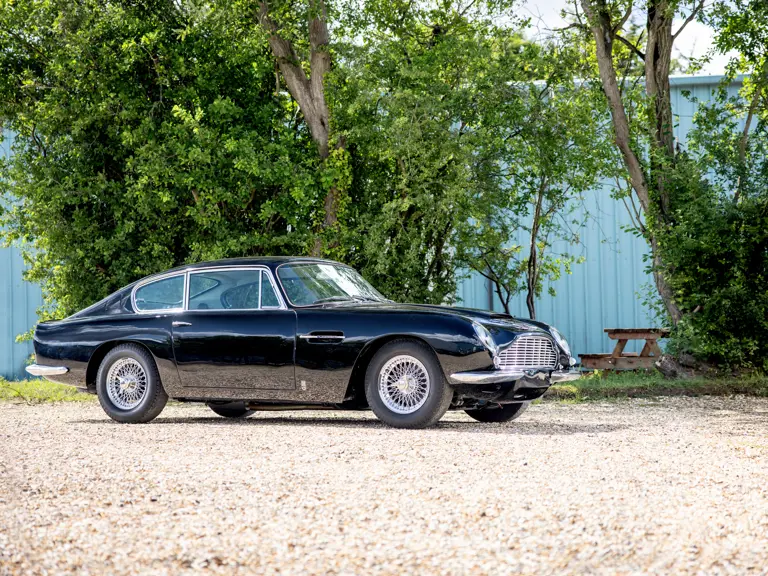
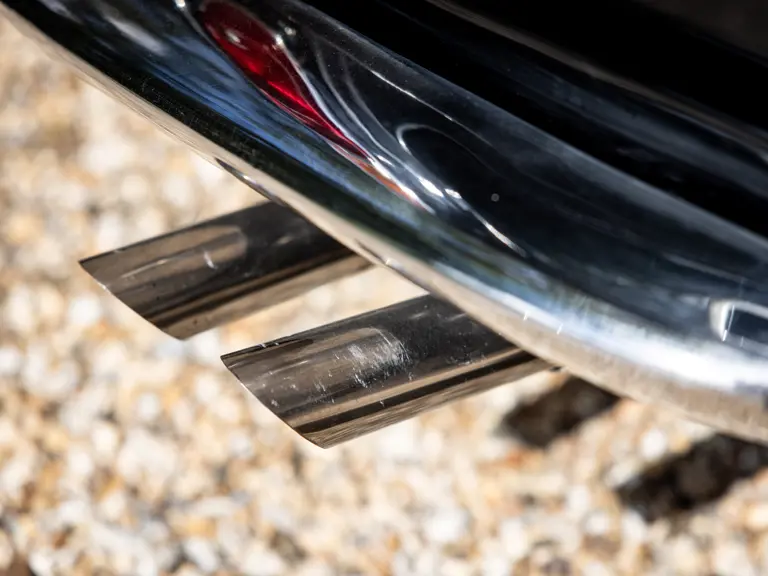
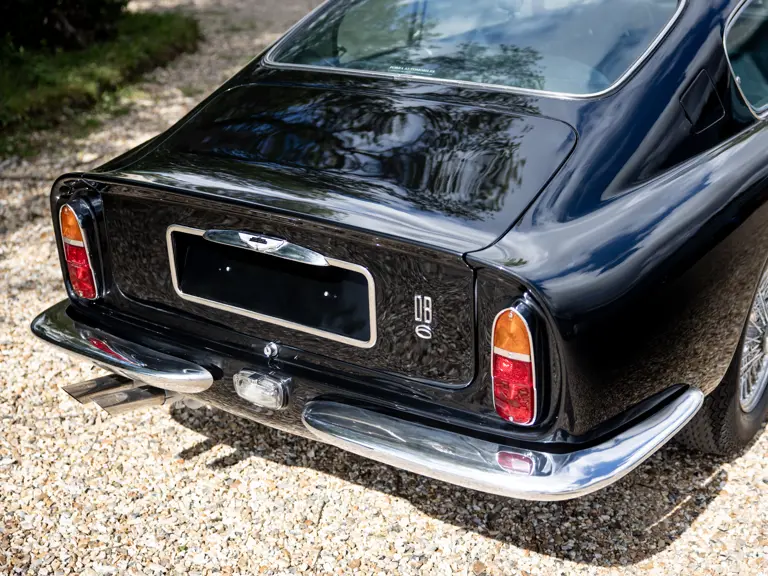

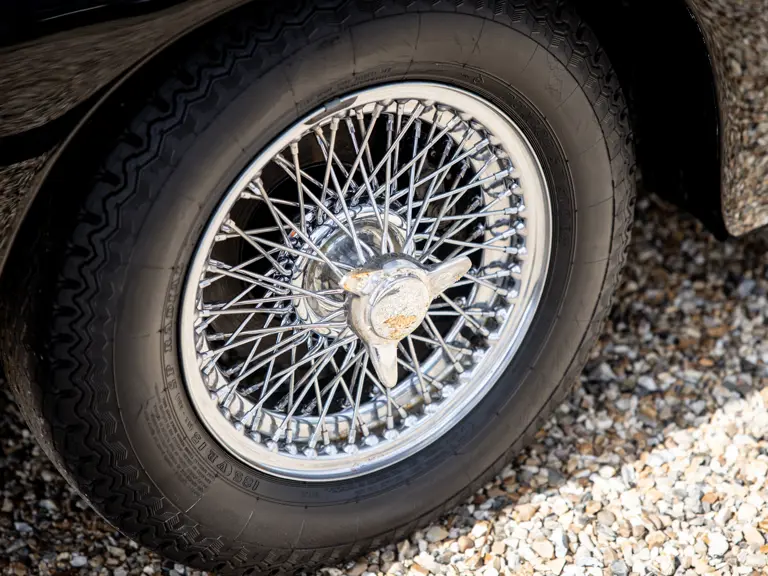
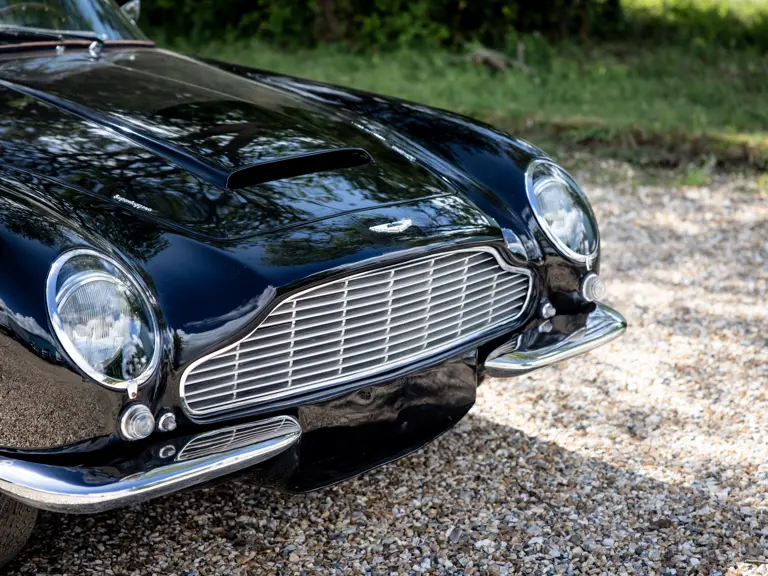
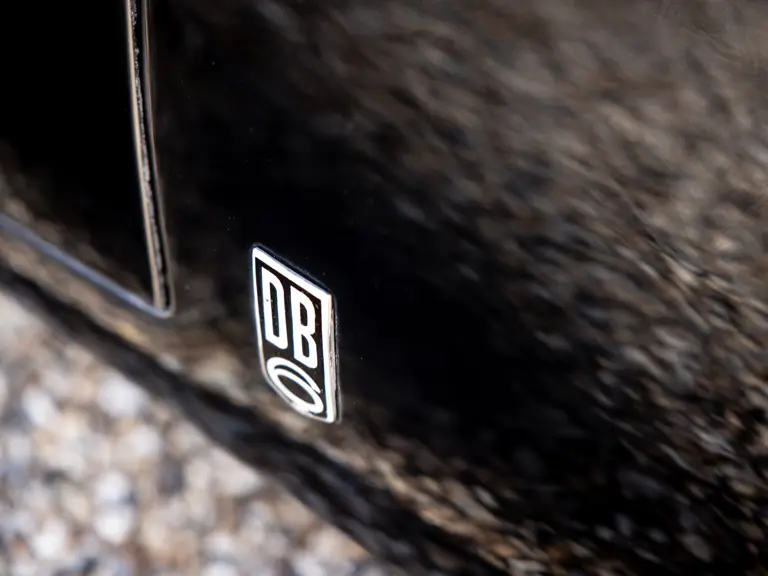

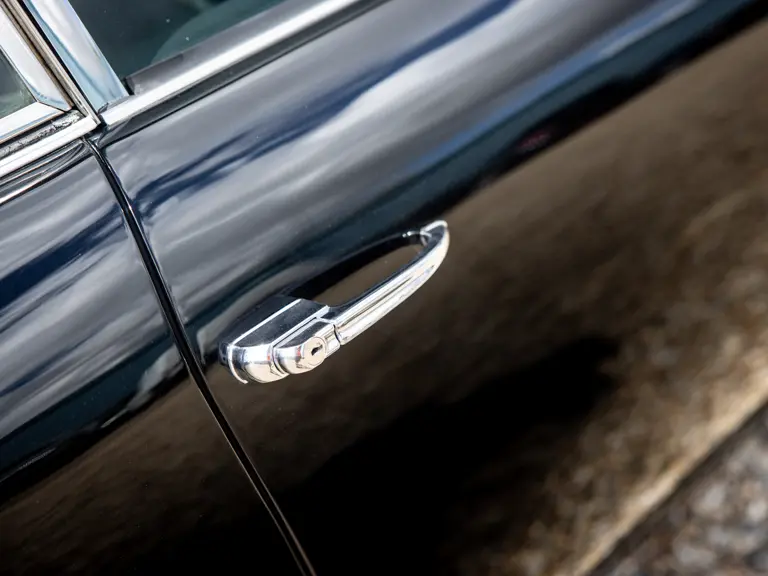
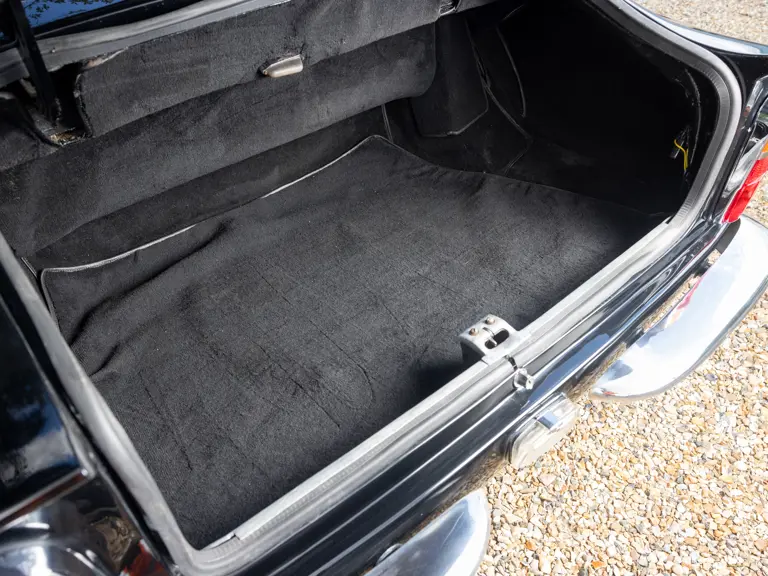
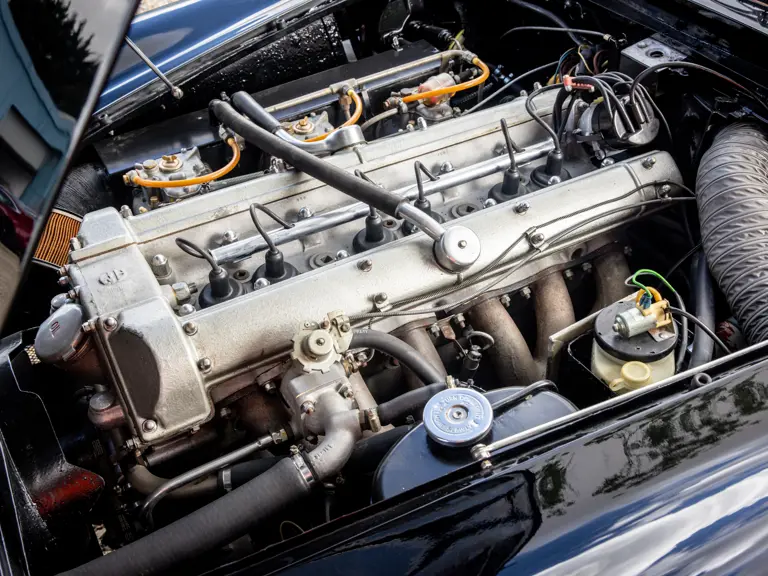
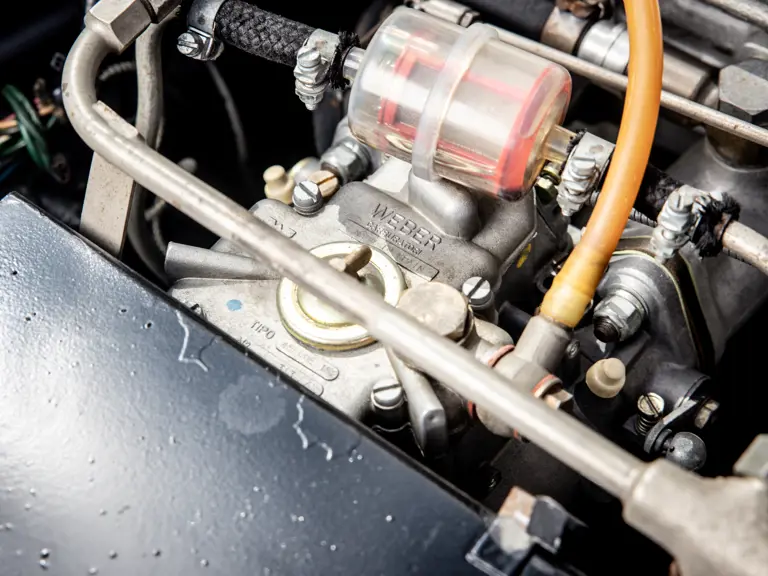

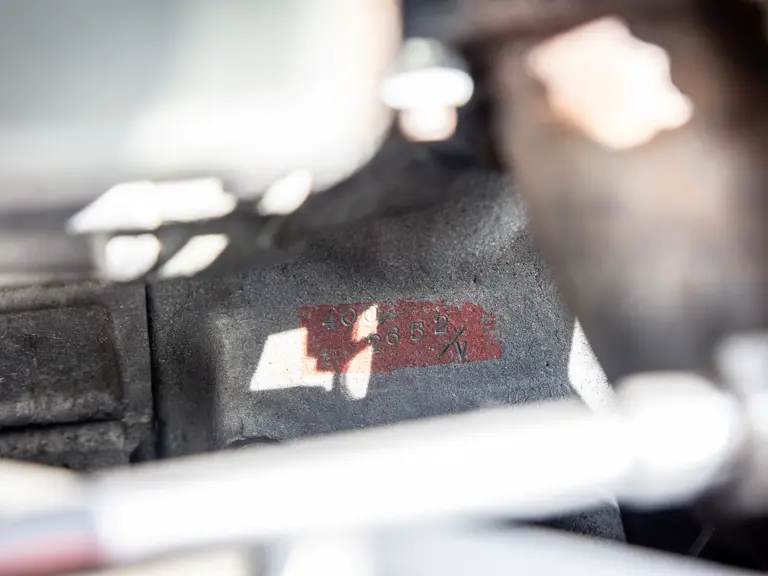
 | St. Moritz, Switzerland
| St. Moritz, Switzerland
